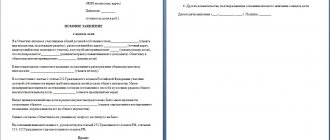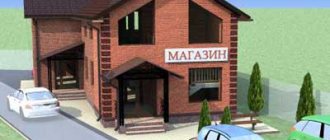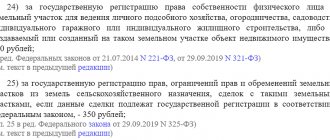Division of land according to Art. 11.2, clause 1, art. 11.4 of the Land Code of the Russian Federation is a method of converting a plot into two or more real estate objects. Upon division, the original plot ceases to exist, and the resulting new land holdings must strictly comply with the requirements of the law. In accordance with paragraphs. 1-2 tbsp. 11.9 of the Land Code of the Russian Federation, land plots that do not fall under the influence of the municipality fall under the jurisdiction of national legislative acts. According to Part 4 of Art. 41 of the Town Planning Code of the Russian Federation, when dividing the original land plot, a prerequisite is the availability of approaches to the newly formed land holdings.
The legislative framework
The main document on the basis of which a plot of land is divided is the Land Code
.
So, in articles 11.2, 11.4
it is said that the division of a plot is a type of cadastral work in which two or more were formed from one plot.
The law establishes the minimum permissible dimensions of the areas formed after the division.
The minimum size of a plot that is used for farming is determined by local authorities and fixed by legislative acts.
For other types of plots, permissible minimum and maximum sizes are established in accordance with the documentation (urban planning, design, etc.) and land use and development rules.
From the point of view of the law, the plot can be divided between the owners on a voluntary basis by concluding a peace agreement.
The presence of disputes regarding the upcoming division procedure is grounds for going to court. In this case, the division is carried out by court order.
Nuances
The peculiarities of the procedure under consideration are related to the division of plots into 2 or more, the land being leased and owned by the municipality. Also when dividing a plot on which an apartment building is located.
Divide by two
In this case, the requirements for the allotment are:
- the allocated parts must be in full accordance with the intended purpose;
- the allotment is in circulation;
- there is no establishment of a ban;
- does not act as a collateral;
- does not contain contradictions to urban planning regulations;
- taxes must be paid (including land tax for legal entities);
- a complete package of documentation has been collected;
- cadastral status;
- Minimum dimensions are met.
The process under consideration requires the consent of the spouse, if the owner has one. If there are several owners of the site, permission must be obtained from each of them. The document must be certified by a notary office. When the owner’s initiative is unilateral, then it is necessary to contact the judicial authority.
To carry out the procedure, you need to collect all the necessary documents, which include:
- cadastral papers;
- boundary passport;
- certificate confirming ownership;
- the document through which the rights were transferred to the owner;
- permission in proper form;
- acts confirming the identities of all owners.
Sample application for division of land
Next, write an application to the competent company. It is written in the name of the head of the company. The address of the institution can be found on the Internet. You can also contact your local Rosreestr office. The statement states:
- full name of the organization;
- form of activity;
- manual data;
- information about the applicant;
- document's name;
- data regarding the allotment;
- indicate the grounds for acquiring land rights;
- intentions to divide the land;
- indicate the reason for the appeal;
- list the papers offered;
- signature and date at the end of the sheet.
An agreement can be drawn up to divide the plot between the owners. Such a document is rarely disputed. When several persons own a plot of land, they can divide it under the following conditions:
- legal support is adequate;
- there are no restrictions or encumbrances;
- ownership is documented;
- the act is drawn up between all owners;
- All land owners turn to the geodetic company.
An act is drawn up in free form. The number of copies is equal to the number of owners. It states:
- information regarding each owner;
- land information;
- agreement reached between the parties.
An example of an agreement on the division of a plot between owners.
In this case, the division is carried out in the order of land surveying. The decision regarding the division of land is made by the above-mentioned company, if it has the authority to do so. These rules vary in each region.
After land surveying, it is not yet considered divided. The algorithm is presented as follows:
- The boundaries of the allotment are drawn and marks are set on the site. At this time, land surveying is being prepared.
- The formed lands are registered in the cadastral register. Also, the main plot that was divided is removed from such registration.
- The owners are issued documents through which their rights are verified.
During the registration process, the applicant will need to pay a state fee. Its size is 350 rubles from each plot.
In addition, it is paid for the fact that the main site is deregistered. Payment is made in the method that is most convenient for the applicant. The receipt is attached to the main package of documents.
Rights are registered at the Rosreestr branch or by contacting the multifunctional center. Applications can be made in person or via postal services.
When visiting the authority in person, you must have a document with you to verify the identity of the applicant. Documents are accepted against signature. The date when it is necessary to re-visit the authority and obtain completed documentation will also be indicated.
Each participant in the section completes the registration personally or through a person providing representation services. In the latter case, a power of attorney executed in the proper manner is required.
Under an apartment building
In this case, it is almost impossible to resolve the issue peacefully. This is due to the fact that all apartment owners have ownership rights to the land adjacent to the house. Everyone's shares are equal. If agreement has not been reached, then the possibility arises:
- agree on the allocation of shares;
- securing shared ownership through a judicial authority.
After this, all owners will be able to dispose of the shares at their own will.
For rent
This process is presented in the form of the formation of plots from one plot, which is classified as municipal property. In this case, the resulting plot must have the same category as the original one.
The division of a plot that is leased is required when the real estate located on it is alienated.
Municipal property
When dividing such lands, the requirements are similar:
- divisibility;
- voluntariness and so on.
It is not necessary to obtain consent to carry out the procedure when the plot is allocated for use by state or municipal enterprises. Registration is carried out on the basis of:
- an application submitted by the executive authorities;
- acts of local authorities;
- persons who received plots under certain conditions.
When it is established in relation to a plot that it is indivisible, the registration is based on the shared right or lease of a large number of persons, which is formalized by the tenant.
Purposes and conditions for dividing the plot
The purpose of land division is to turn one plot of land into two independent plots.
The procedure for dividing a plot is understood as a whole series of activities, which consist of carrying out preparatory and cadastral operations, and registration work to formalize the division.
When the partition process is completed, the single area ceases to exist.
Instead, two separate sections are formed, endowed with independence by law.
The owners of the divided area receive the right of common ownership of the plots.
Dividing a land plot into two parts is possible subject to the following conditions:
- After the division, each resulting area receives independence.
- The original purpose of the site should not be changed.
- The area of the plot should not be less than the minimum norm established by law.
- Each site must have its own entrance or passage.
- There is no legal prohibition on the division of land. Thus, plots intended for farming cannot be divided into two parts.
State certificate for land
This document is the main document that secures the right to use the land plot. This depends on its purpose, which is determined by the act in question. Ownership rights are secured at the time of registration of the deed.
State act on the site
A plot can be divided subject to the conditions established by the legislator. The plot can be divided into as many parts as the owner requires.
Division of the plot peacefully
If an agreement has been reached between the owners of a land plot regarding the division of the land into two parts, then they only need to draw up a peace agreement and formalize it notarized.
After the local authority issues a resolution on the division of common land into two independent plots, the owners will only have to carry out the division procedure, register the plots in the cadastral register and register ownership.
In the land division agreement, owners must indicate the following information:
- Your personal data (profile and passport, contact).
- The address where the site is located.
- Cadastral number.
- Written consent of all owners to the division of land.
- Description of the method of dividing the site.
- Methods of payment of necessary expenses of the parties.
If one of the owners opposes the division of land, it becomes possible to resolve the issue only through the court.
You will probably be interested in looking at the mental map “Equity Participation Agreement in Construction”, which explains in detail how to formalize or terminate the agreement
Or HERE you will find out how to get compensation for kindergarten for a child
What are regulatory legal acts in the Russian Federation:
Rules for dividing a land plot
Most often, plots are divided between spouses who have divorced, or the heirs of the deceased owner (legal or by will). But it is necessary to indicate that not all plots are subject to division. Sometimes it happens that the technical capability is simply not available. And there is one more obstacle - the lack of title documents for the land.
But if the plot is subject to division, then it is necessary to take into account the rights of both shareholders. This primarily concerns free passage or passage. For example, if after the division one of the plots turned out to be cut off from the road, then a road or alley to the house should be left through the second, and the owners of the first plot could move freely along them.
Easement - the right to limited use of a neighboring plot Source pronovostroyku.ru
See also: Catalog of the most popular sites in the Moscow region for the construction of suburban housing.
The right to limited use of a plot other than one’s own is called an easement. It can be achieved by mutual agreement. If both parties do not reach an agreement, the conflict is resolved in court.
So, if the owners have agreed to divide the land, then you just need to formalize the agreement. This document does not have a standard sample, and according to the law, it does not need to be certified by a notary. But experts still recommend going to a notary and having the document certified. Just in case, for the sake of legal reliability.
It should be noted that dividing a plot into two and allocating a share from the common land use facility are different things. In the first case, each new plot receives a new cadastral number. That is, on the area of one land use object, two new ones are formed.
In the second case, the cadastral number of the main object does not change. And the allocated share gets its own number. Accordingly, all other information changes.
Cadastral numbers of land plots Source penza-post.ru
As practice shows, most often such cases end up in litigation. Here, either one of the owners does not want partition, but wants to get the entire property, or obstacles arise that are created by local governments, often government agencies acting in this capacity. In the first case, one of the owners needs to go to court. In the second, you need to prepare a so-called administrative claim.
Through the court
A claim in court is filed in different ways, depending on who the litigation is against.
- If with an individual or company, then the application is drawn up according to Article 131-132 of the Code of Civil Procedure of the Russian Federation.
- If with municipal or state bodies, then Articles 124-126 of the CAS of the Russian Federation should be taken as a basis.
In both cases, it is important whether a preliminary survey of the site has been carried out. If “YES”, then winning the case in court will be the easiest way.
If land surveying was not carried out, or rather, one of the owners did not come to this procedure and did not send his representatives, then the plaintiff will have to make a lot of efforts to prove to the court that his claims to divide the plot are legally and technically possible. As practice shows, if one of the shareholders did not participate in land surveying, that is, he does not want to divide the land plot, then legal proceedings can drag on for a long time.
Sample statement of claim Source gopri-rda.gov.ua
Possible difficulties when resolving the issue through court
The need to go to court arises if disagreements arise between the owners or the whereabouts of one of the owners is unknown (which makes it impossible to obtain his consent).
When making a decision, the court is guided by the desire to respect the interests of all land owners. No one's interests should be infringed as a result of the division.
The statement of claim must be drawn up properly.
It is advisable to contact a competent lawyer who will help prepare the document.
In addition to information about the owners and the land, the statement of claim indicates what areas and boundaries the plots will have as a result of the division.
All necessary documents and copies are attached to the statement of claim (copies of passports, cadastral number, duty payment receipt, etc.).
The list of documents for each specific situation may differ.
The statement of claim with the attached documents is submitted by the plaintiff to the court at the place of residence of the second owner.
If there are no obstacles to dividing the land, the court can, without any particular difficulties, decide to allocate to the owners a share of the plot that has a separate driveway or passage.
But it is possible that the court will refuse the plaintiff. For example, if the land is legally indivisible.
In this case, the court can determine the procedure for using the plot, when each owner has his own part of the land at his disposal, but legally the plot is a single whole.
In some cases, the court may decide to sell the plot and distribute the proceeds from the sale in proportion to the shares of the owners.
Problems of joint ownership of a house and land
The situation when several owners own a house and a plot is not simple in itself. Especially when the co-owners are in hostile relationships and often simply cannot come to agreements on everyday issues.
However, since the real estate remains in shared ownership, they often need to make some general decisions regarding:
- registration of new residents;
- carrying out repair activities;
- reconstruction of technical networks.
In complex relationships, this is quite difficult to do, or even impossible, and most owners try to allocate their share by dividing property.
This can be done by separating a part of the house and the territory underneath it, in other words, through real division.
Stages of dividing a plot
The procedure for dividing a plot includes a number of stages:
- Concluding an agreement with an organization that has a license to conduct land surveying (determination of site boundaries).
- Obtaining the consent of other owners to carry out land surveying.
- Obtaining a court order (if it is not possible to reach an agreement between the owners).
- Providing the cadastral engineer of the organization with title documents.
- Establishment of site boundaries by an engineer . The establishment of boundaries must be carried out in the presence of the owners or their representatives with a power of attorney. The engineer will establish the boundary of the site and the boundaries of the two new sites being formed. The boundaries will be fixed with special signs. Also, the specialist will determine the area of the original land and two new plots. Based on the results of the work, boundary drawings will be drawn up and a boundary file will be generated (an act of establishing boundaries, a drawing, a sheet for calculating the area).
- Assigning addresses to the two resulting areas . To do this, you need to write an application to the architecture and urban planning authority, attaching the relevant documents (land survey file, title documents, cadastral passport for the original plot, peace agreement or court order).
- Registration of two new plots for cadastral registration . To do this, you need to contact Rosreestr with an application, passport, land survey file, and a resolution on assigning an address. The application can be submitted not only in person, but also by mail, through the government services portal, or at the MFC. Cadastral registration authorities must register new plots of land within 10 days from the date of receipt of the application. Then citizens are issued passports for the resulting land plots.
After going through all these stages of division, the owners only have to register ownership of the new plots.
Land survey plan
When the division of the plot is completed, the owner receives the first deed for the land, which is called the boundary plan. The document is drawn up by a cadastral engineer who is authorized to carry out such activities.
The plan is made according to a form that is considered special. It must include a text part and a graphic part. Each part has its own subsections.
The text includes:
- general information regarding the work;
- data having an original meaning;
- calculations that were made;
- information regarding newly formed areas;
- an act issued by a cadastral engineer;
- a document indicating that the boundaries were agreed upon between neighbors.
Example of a land surveying plan
Next are diagrams, drawings, and maps related to the plot. They must be executed in accordance with the requirements established regarding the use of topography signs, scaling, and the creation of drawing layouts. Specialists need to prepare several sections:
- a diagram where geodetic structures are marked;
- drawings of new sites;
- the diagram according to which the location occurs;
- turning points (their outlines).
Example partition layout:
Sample land division scheme
The time allotted for preparing the document depends on how busy the company is and what the conditions for carrying out its activities are. Some companies apply a special tariff, which guarantees relatively quick completion of work. On average, the period varies from 1.5 to 3 months. Accordingly, this factor affects the cost of work.
It is necessary to pay for the surveying of both plots; the cost also includes the production of a survey plan. The average price across the country is about 8 thousand rubles.
List of documents for registration of property rights
For state registration of formed plots, it is necessary to provide the relevant documents to the authorized bodies:
- A peace agreement certified by a notary (if there is a voluntary agreement between the owners).
- Court ruling (when resolving the issue through the court).
- Passports.
- Title documents for land.
- Administration resolution on assignment of addresses.
- Cadastral passport.
- Receipt of payment of the state registration fee.
- Power of attorney (if the interests of the owner are represented by a proxy).
1.What is shared between spouses?
The Family Code establishes a list of property that is jointly acquired and subject to division. So, in accordance with Art. 34 of the Family Code of the Russian Federation, it includes the income of spouses, except for those that have a designated purpose. For example, the amounts of financial assistance are not divided. In addition to the income itself, real estate purchased with it, cars, various securities, bank deposits and any other property, except personal belongings, are also subject to division. The main thing is that the property must be acquired using general income.
Important! Even personal property can be recognized as joint property if it is proven in court that during the marriage significant funds from the common property of the spouses were invested in it. Labor, monetary and property investments are taken into account. For example, if major repairs were made in the husband’s apartment, which he received by inheritance, at the expense of common funds, the court recognizes this apartment as common property.
Let's look at the situation: Andrey opened a bank account, and a year later he got married. During the marriage, due to the common funds of the spouses, the amount on it increased several times. In such a situation, the contribution will remain with Andrey, but he will have to reimburse his ex-wife half of the funds invested during the marriage.
As a general rule, all property belonging to the spouses remains with them; children have nothing to do with it. But there is an exception provided for in paragraph 5 of Art. 38 RF IC. Thus, items purchased exclusively for the child are not divided and are transferred to the spouse with whom the child remains. Such things include, for example, stationery for school, children's clothing, musical instruments, toys, laptop, etc. However, compensation in this case is not paid.
Important! A deposit opened in the name of a child, to which funds were deposited from the joint income of the spouses, is not divided after a divorce. He stays with the child. The child's property is excluded from the division. This also applies to real estate that was initially acquired into his ownership or was transferred during marriage.
2.3. THE PRESENCE OF CHILDREN MAY AFFECT THE SIZE OF THE SHARE
As a general rule, jointly acquired property is divided in half between spouses. But the court has the right to deviate from this rule if it is necessary to protect the interests of the spouses’ common children. Courts may increase the share of the parent remaining with the child in the apartment or house where the child lives (or award this entire property); the share of such parent in the total debt obligations of the spouses may also be reduced.
But in exceptional cases (unscrupulous behavior of the second spouse or serious illness of the child), the court may award a larger share of the entire property to the one who remains to live with the child.
Paragraph 2 of Article 39 of the RF IC allows the court to deviate from the principle of equality when dividing property and allocate a larger share to one of the parents in the interests of the children. However, their mere presence as a dependent does not affect the size of the former spouse’s share. This is a right, not an obligation of the court. There is no uniform judicial practice on this issue, however, having studied court decisions, one can find a number of reasons why judges often deviate from equality of shares.
Let's consider the main ones:
Purposes of land division
The main goal of land surveying by the state is to increase the number of land users and denser development, which contributes to a more rational use of land. Therefore, applications regarding land surveying are readily considered by government officials. As a result of the division, two full-fledged and independent land plots are obtained, which can be more efficiently managed than one.
The main goal on the part of private owners is, in addition to the property relations described above, this may be preparation for the sale of part of the territory belonging to them. Usually registration is made in the name of relatives. Yes, of course, the owner changes, and there are risks, but finding a buyer for a ready-made divided plot is easier than dealing with paperwork when you are ready to buy it.










